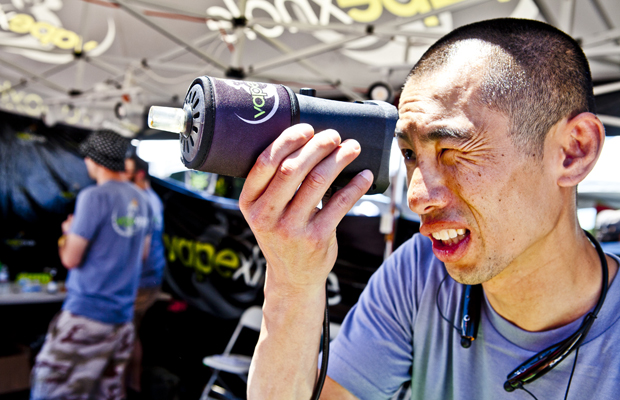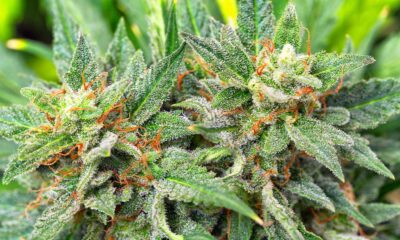
Joint Opinions
A Personal History of Vaporizing
It wasn’t too long ago when people that enjoyed cannabis only had one way to consume it — smoking. Today, there are tinctures, edibles, topicals and vaporizers. After being introduced to vaporizing in 1997, I was instantly obsessed with the technology. I found it to be the closest alternative to smoking where the onset of the effects of the medicine happen quickly and allowed the user to exhale a cloud that was reminiscent to smoking. These components were missing with edibles, tinctures and creams.s
The Early Days (Mid ’90s-Early 2000s)
In 1997, I was working as a stuntman in Hollywood and my bodily injuries were quickly accumulating. My doctors prescribed Vicodin and Percocet but I didn’t like the way it made me feel. Although cannabis relieved a lot of my ailments, I didn’t like the way it felt on my lungs. A friend told me about a guy named “Eagle Bill” that was pushing something called vaporization.
I jumped on the Internet to research this topic and most of the vaporizers that I could find operated under conductive properties. After more research, I stumbled upon the BC Vape, which was essentially a soldering iron with a metal bowl on top of it where medicine could be placed. A device that looked like an upside down fishbowl was used to cover the top of the soldering iron to collect the vapor that could be inhaled through a hose.
Although I appreciated the fact that the vapor was healthier than smoke, the experience was less than satisfying. I kept using my BC Vape until around 1999 when convection vaporizers began making it to the market. This was one of the biggest technological leaps for vaporization technology because instead of using a hot plate to release the vapor from the herbs, hot air was used to release the active components. With conduction, the bottom side of the herbs would vaporize but the top of the herb would still be green. It was a very inefficient way to vaporize. The arrival of convection vaporizers, changed the game.
The early convection vaporizers included vaporizer like the Vriptech. The Vriptech borrowed Eagle Bill’s concept of utilizing a heat gun as the heat source of hot air to convectively release the cannabinoids from the herb. The Vriptech system utilized waterpipes and brought the vaporizer experience one step closer to the smoking experience. The only problem was the heat gun required 1500 watts and was very cumbersome to use but at least a device that could promise a satisfying vapor hit was now available to the public. It introduced another level of extraction and the vapor experience became much more enjoyable.
The Middle Age (Early 2000s – Late 2000s)
After convective technology became more mainstream, a wider variety of vaporizers began to appear on the market. Two main types of vaporizers came into prominence: bag vaporizers and whip vaporizers.
The first crop of whip vaporizers were wooden boxes that also utilized a soldering iron as a heat source to heat up the air. The whip, which was attached to a silicon hose, was the repository for the herbs and the hose connected to the soldering iron. They were priced affordably and for many vaporists, these were the vaporizers that got them hooked on vaporizing.
The mid 2000s saw the rise of the bag-based vaporizers, the most popular being the Volcano. These vaporizers also operated on convective principles and utilized a fan to blow hot air into the herb repository where the vapor produced would be captured in a bag. This was a great advancement that benefitted patients that couldn’t inhale through a whip that had resistance like a waterpipe might have.
By the late 2000s, the Vapor Brothers whip vapes and the Volcano bag vapes all had a multitude of competitors. Each manufacturer would push each other to make better quality vaporizers and models like the Silver Surfer, Arizer Extreme and Herbalaire began to gain prestige.
The Golden Age (2010 – Present)
Around 2010, a new crop of vaporizers entered the market that had a more consumer-friendly look. As more states allow for both medical and recreational use, the demands of the consumer have also increased. Digital displays, faster heat up times, thicker vapor and sophisticated heat algorithms are all status quo today.
As lithium battery technology improved, portable vaporizers have become more common. While they do not produce vapor quality and density compared to home units, the convenience factor cannot be denied. With choices like the Pax, Ascent and Da Vinci, there is a wide variety of portable vaporizers for consumers to choose from.
So, what’s next for vaporizers? With the popularity of concentrates gaining steam, vaporizers of the future must be able to accommodate both herbs and oils with equal efficiency. Designers of upcoming vaporizer will have to learn to adjust to the users needs in order to gain or maintain relevance.
By Seibo Shen
Do you vape? What are some of the experiences you’ve had with vaporizing? Tell us in the comments below.


























